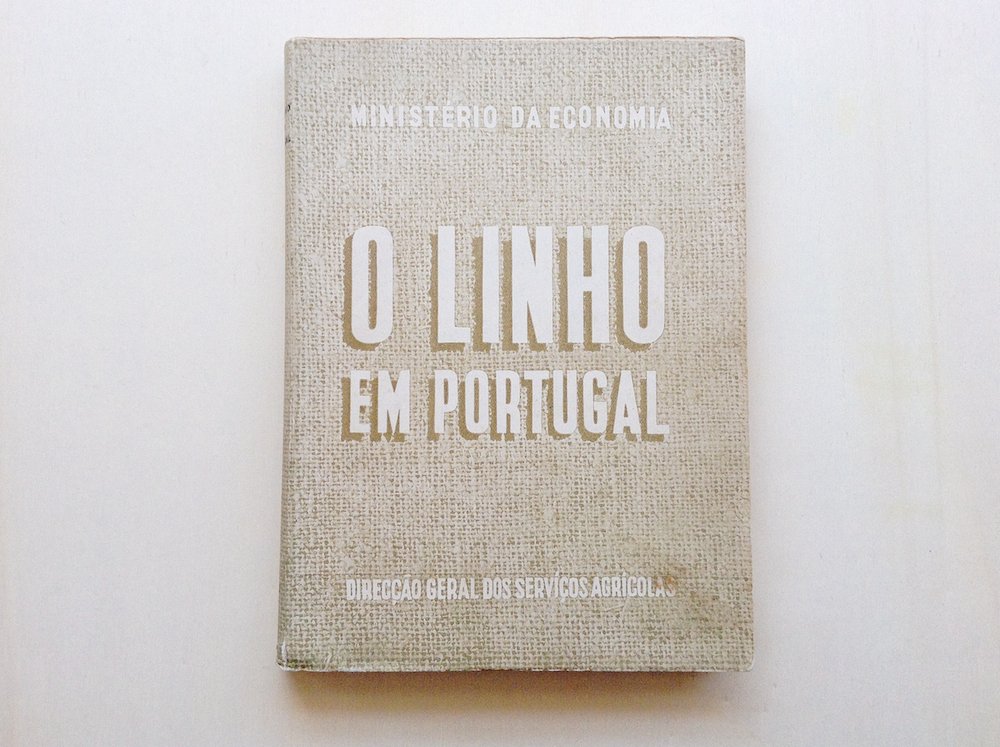Recent acquisitions
The books I look for are always more technical and practical than historical or ethnographic, which makes them harder to find. But recently I've come across a few that have to do with topics I'm researching. Some I've actively sought out, some I've been offered and others I've found by chance - the universe provides.
O Linho para Fibra: Sua Cultura (1944)
This little book was written by the agronomist Flávio Martins and published by EFANOR. It was only a few weeks ago that I came across this book and learned who Flávio Martins was and his role in researching the cultivation and processing of flax as a textile fiber. This book is aimed at the farmers who, at the time, were hired by EFANOR to grow the flax that would later be processed in this industry in Senhora da Hora. It therefore contains well-structured information that is communicated in an accessible way, but only about choosing the varieties to use, harvesting the flax, sowing, possible plant pathologies, etc. It doesn't go into the processing of the fiber itself, because that was the work that was done at the EFANOR unit, of course.
Cultura do Linho: Conselhos aos Lavradores (1950)
Also written by Flávio Martins and edited by EFANOR. The content is very similar to the previous one, but a little more extensive and with images. This one was given to me by António Fernandes da Silva, the author of the study on the use of flax in handicrafts that I'll talk about next.
O Linho Têxtil para Artesanato (Junho 1994)
This study was given to me by the author, agronomist António Silva, at a meeting a few days ago. It's very informative, because it deals with a subject that interests me greatly, which is the optimization of fibre processing, as a semi-artisanal or semi-industrial process, capable of being carried out by individuals or small units independent of industrial production.
Cartilhas do Lavrador nºs 49 & 50 - Cultura do Linho (1933)
I found this one when I went to a bookshop to buy the National Wool Classification on purpose, and I brought it back simply because it was a bargain. I wasn't expecting much, because it's part of a periodical collection which, frankly, could well be superficial and generalist, but it surprised me. The truth is that I had forgotten that this type of information only degenerated from the 1960s-70s onwards, when it became more "infotainment ” than anything else, and this issue, which predates that, contains very detailed practical information on all stages of flax cultivation and processing.
O Linho em Portugal (1943)
Published by the Direcção Geral dos Serviços Agrícolas, and as the title indicates, it is a study on the state of flax cultivation for textile fiber at the time and considerations on its viability in the future, including the cultivation of foreign varieties with higher yields and improvements in industrial processing. This book has something very interesting for me, which is the rigorous survey, district by district, of the variety of flax that was grown, for what purpose, profitability, destination of production and even the reasons for the preferences of each variety.
Tecnologia Tradicional Portuguesa - O Linho (edição de 1978)
This one doesn't need much introduction. It is well known and referenced, but of all of them, for me personally, it is perhaps the least useful. I don't take away the importance it has for ethnographic studies, but reporting on customs without trying to understand the reasons for sowing in a certain way or tanning in another way leaves me without answers to the questions I'm trying to answer. But that's not the book's problem, I just have different objectives.
Classificação das Lãs Nacionais (1947)
I learned in the book “Raças Autóctones Portuguesas” (Portuguese Autochthonous Breeds), which I highly recommend, that the Classification of National Wool used today is still that of Dr. Mário Coelho Morais, and that it is defined in this publication that I was lucky enough to find here in Porto. The book tries to categorize the different national wools so that their textile characteristics can be defined, but with industrial processing in mind. It was the 1940s and the need for categorization was different from what I see now, of course, but this document is still very useful to me.
Cartilha de Tosquia Mecânica (3ªedição de 1979)
A sort of reworking and upgrade of the classic Cartilha do Tosquiador, but this one dedicated to shearing with a machine rather than scissors.










